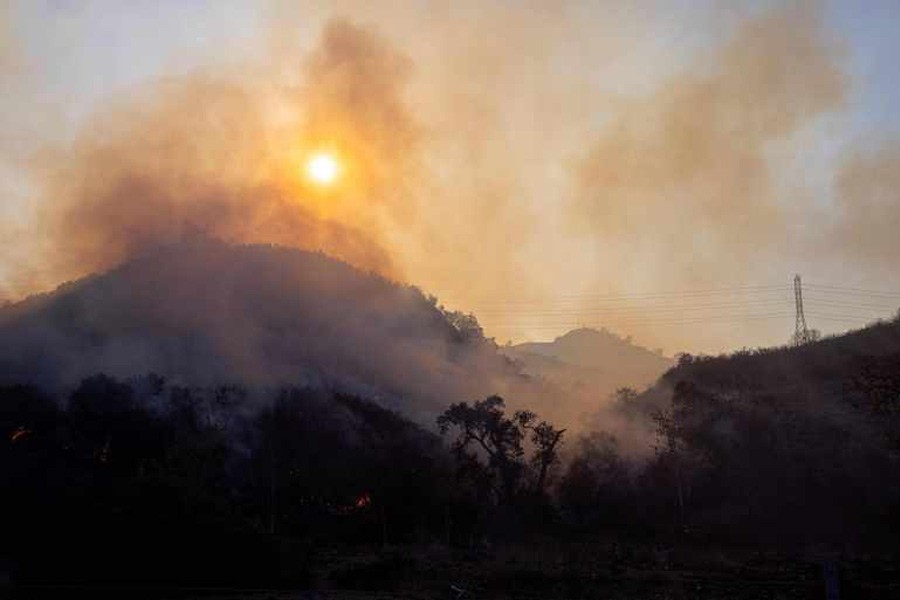Disasters fuelled by weather and climate extremes brought “catastrophic results for millions” across rich and poor nations in 2020, causing thousands of deaths and tens of billions of dollars in losses, charity Christian Aid said on Monday.
In a report, the aid agency identified 15 of the most destructive climate disasters of the year - from wildfires to floods and storms and locust swarms - nine of which led to damage worth at least $5 billion each, based on insured losses.
Financial costs tend to be higher in richer countries as they have more valuable property, it noted, but some extreme weather events in 2020 were devastating in poorer countries, with generally higher death tolls despite a lower price tag.
Report author Kat Kramer, Christian Aid’s climate policy lead, said “climate breakdown” had compounded the effects of the COVID-19 pandemic in vulnerable regions.
“The good news is that, like the vaccine for COVID-19, we do know how to fix the climate crisis,” she said. “We need to keep fossil fuels in the ground, boost clean energy investment and help those who are suffering on the frontline.”
Here are some facts on the 2020 climate-related disasters described in the report titled “Counting the cost 2020: A year of climate breakdown”:
■ The United States was hit by the highest economic costs, suffering from both a record-breaking hurricane season and a record-breaking wildfire season, adding up to more than $60 billion in damages. While fires are a natural part of some ecosystems, a hotter, drier climate caused by human activities is affecting the extent of these fires, the report said.
■ Bushfires in Australia that started in late 2019, spurred by recurring droughts and soaring temperatures, destroyed thousands of buildings, killed more than a billion wild animals and caused at least 34 deaths, costing an estimated $5 billion. The World Weather Attribution group of scientists calculated that global warming hiked the risk of the fires by at least 30 per cent.
■ Cyclone Amphan was one of the strongest storms on record in the Bay of Bengal and the costliest tropical cyclone of the year, with losses amounting to more than $13 billion in India, Bangladesh and Sri Lanka. Record temperatures in the Bay of Bengal of 30-33C could have led to the storm’s rapid intensification, said Roxy Mathew Koll, a climate scientist at the Indian Institute of Tropical Meteorology.
■ Six of the 10 most expensive weather events this year happened in Asia, five of them associated with an unusually rainy monsoon. Floods that unfolded over several months in China and India cost an estimated $32 billion and $10 billion respectively.
■ In East Africa, huge locust swarms ravaged crops and vegetation across several countries, causing damages estimated at $8.5 billion. The swarms formed after an unusually high number of cyclones in the Indian Ocean - partly fuelled by rising sea temperatures - dumped vast amounts of rain in the deserts of Oman, creating perfect breeding conditions.
■ Europe was struck by windstorms Ciara and Alex which cost nearly $6 billion and killed 30 people. Such “extratropical cyclones” are expected to become more common and damaging in Europe as temperatures rise with global warming, the report said.
■ In Pakistan, heavy rains during the monsoon caused 410 deaths, with damage caused by floods and landslides estimated at more than $1.5 billion. This year’s monsoon season has been abnormally rainy in Asia, the report said, noting this increased rainfall is consistent with climate change predictions.
■ South Sudan experienced one of its worst floods on record after intense rainfall caused the Nile and other rivers to overflow. The flooding killed 138 people, affected more than a million and destroyed crops. As the planet warms, scientists expect more such heavy bouts of rain, the report noted.


